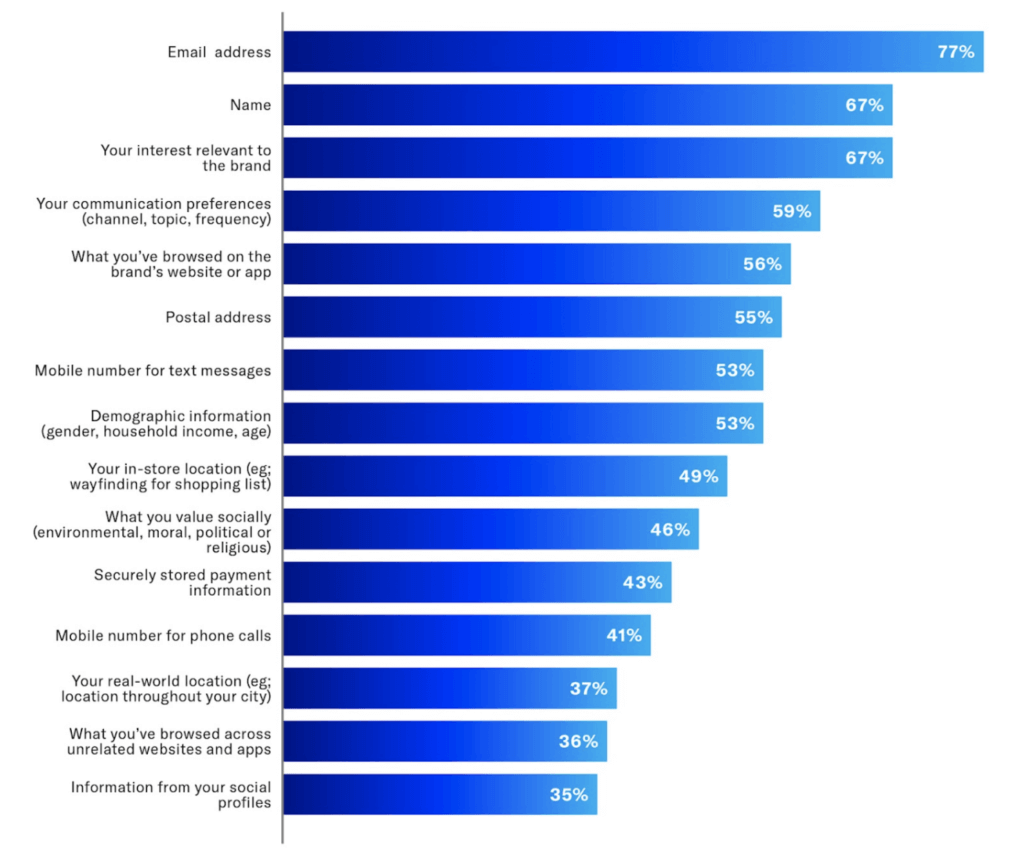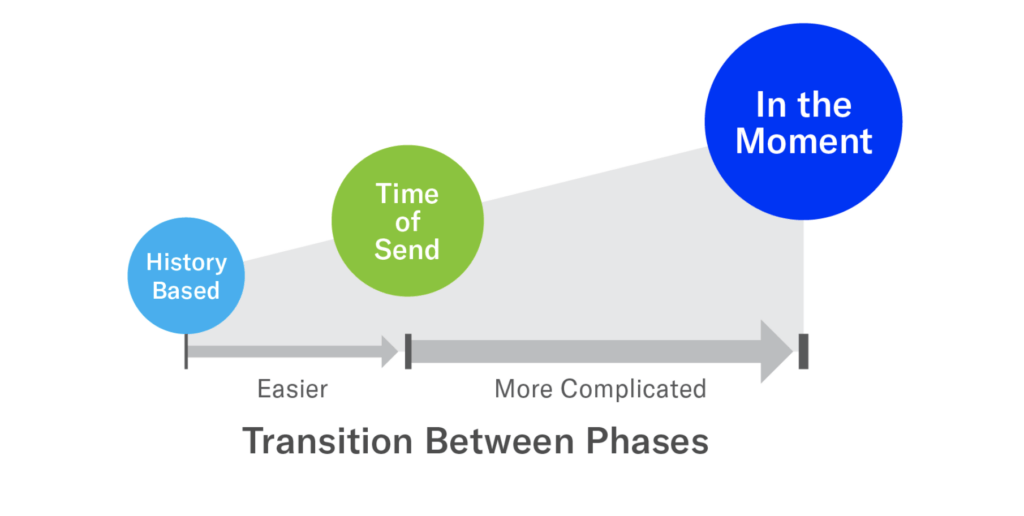First name is not enough: applying advanced personalization tactics to mobile

Jennie Lewis Sr Manager, Customer Insights
Customer expectations around personalized experiences are increasing. Salesforce reports that 73% of customers expect companies to understand their unique needs and expectations, up from 66% in 2020. And I’ve experienced this in my own interactions with brands. When I have an amazing interaction with a food delivery app, that experience is etched in my mind the next time I use a retailer’s app. Customers are not comparing your brand to your competitors, they’re comparing you to their last best experience. Insider Intelligence’s Dave Frankland refers to this as “Transference of Entitlement.”
“77% of consumers have chosen, recommended or paid more for a brand that provides a personalized service or experience. “
Forrester Webinar – Individualization Versus Personalization
With these increased expectations, personalization is no longer just an option. But as you make plans for personalization, think beyond simple tactics, like using the customer’s first name. While the data shows a small lift in open rates with basic personalization, Liveclicker found that advanced personalization tactics result in 17% more revenue. This means that if you’re running a campaign with basic personalization (i.e., using list-based segments and first name in the greeting), generating typical enterprise revenue of $500k, making the change to advanced personalization tactics (i.e., using behavioral data to target and personalize at the time of open) leads to an opportunity for $85k in incremental revenue.

Great experiences incentivize customers to share more data with your brand. Airship’s recent survey of 9,000 global consumers showed that customers are more willing to share their data with brands if it results in a better experience. Customers, especially those who have established accounts, expect that you know their past interactions, interests and communication preferences. I recently made a purchase from a DTC beauty brand where I used an offer. I’ve continued to get emails after the product arrived suggesting that I had not made the purchase or used the offer. Not only is this a broken experience, it’s a missed opportunity for post-purchase educational content, usage reminders and cross-sell offers. It has diminished my impression of the brand, leading me to start ignoring and deleting their messages.
What is advanced personalization?
Similar to a brand’s mobile app experience, personalization moves along a maturity curve. We see brands progressing along three key phases: History Based, Time of Send and In the Moment.

In the History Based phase, brands target customers based on basic profile data (i.e., city and state), and basic personalization (i.e., first name).
Personalization at Time of Send uses information about a customer’s behaviors and attributes when a message or experience deploys – for example, an entertainment brand using a customer’s most recent viewing history as part of its campaign segmentation. In this phase, a persistent user identifier ties together behavioral data from customer interactions across channels.
In the Moment personalization is the sweet spot of personalization, which uses real-time customer behaviors and preferences to drive experiences. Mobile apps are the ideal destination to enable these personalized experiences. Mobile capabilities, such as segmenting on location and refreshing behavioral information between time of send and time of open, allow brands to better meet customers where they are and with the most relevant information. With In the Moment, brands can create experiences that feel individualized along the entire customer journey.
Alignment across the organization is critical to achieving In the Moment personalization. When brands design their org structure around the customer (rather than the channel), they tend to focus on customer personas and are able to create experiences for specific personas. Persona-based experiences are better tailored to individual needs and show customers that your brand understands their expectations and is respectful of how, when and where they engage.
Imagine a campaign for a bank where they’ve created a cross-channel journey for home buyers using the mobile app as the primary destination for customer interactions.
While checking their balance in the app, the customer sees an in-app message about home loans. They complete a survey in the app to find out their ideal loan qualification amount. After finishing the survey, the customer has the option to book an appointment with a banker. On the day of their appointment, the app alerts the customer to check in as they arrive at the bank. The customer does so and the banker greets them upon arrival with information pre-populated from their survey.
Personalization is essential for app success. Regardless of the phase you’re in, the important thing is to get started now.
If you’re looking for help with your personalization plans, reach out to your Airship Account Manager to learn about a use case audit. We also have Strategic Services available to help guide you in developing personalized experiences for your app.
Subscribe for updates
If the form doesn't render correctly, kindly disable the ad blocker on your browser and refresh the page.